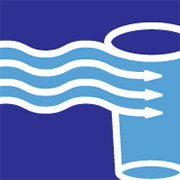Paul Townsley, Vice President of Rates and Regulatory Matters for California Water Service (Cal Water), represented his company and the California Water Association (CWA) at the State Water Resources Control Board’s (SWRCB) Public Workshop on February 8 on the Affordable, Safe Drinking Water Initiative. This is one of several initiatives undertaken by the SWRCB to implement the state’s “Human Right to Water” law passed in 2012. In concert with the workshop, CWA also filed a comment letter expressing its views on how a statewide Low-Income Rate Assistance (LIRA) program would work for water utilities subject to the jurisdiction of the California Public Utilities Commission.
In his presentation, Paul explained that very small service areas that have relatively few customers to share the cost of operating, maintaining and upgrading the water system will generally have higher water utility rates than larger communities, principally because they lack the economies-of-scale. For example, in a community with 5,000 customers, a $10,000 expense would cost each customer $2.00. However, in a community with only 500 customers, that same $10,000 expense would cost each customer $20.
Considering that such communities have limited options with their infrastructure needs, Cal Water has implemented two programs aimed at reducing the cost of water utility service. Like other – water utilities regulated by the California Public Utilities Commission (CPUC) that assist their customers on fixed incomes or who are facing financial hardship, Cal Water offers a LIRA program. In Cal Water’s case, qualified customers enrolled in the program receive a discount of 50 percent of their monthly service charge, up to $48 per month.
Additionally, each of Cal Water’s customers in service areas with poor economies-of-scale receive a discount on the amount they pay for each unit of water through the company’s Rate Support Fund (RSF). The amount of the RSF discount can vary depending on the service area, but the combination of the LIRA and RSF discounts can mean nearly a 50-percent reduction in the monthly bill for eligible customers in disadvantaged or severely disadvantaged communities.
In its comment letter, CWA urged the SWRCB, as it develops plan to address water affordability issues on a statewide scale, to consider how to preserve existing benefit levels for low-income customers who already are receiving this assistance under the CPUC’s LIRA and RSF programs. CWA also supported the funding of a statewide program applicable to all water utilities and customers without unduly burdening customers who are already funding programs that help make water affordable for their eligible neighbors.
Additionally, CWA requested that CPUC-regulated water utilities have the option of participating in a statewide ratepayer assistance program as an alternative to continuing to offer their CPUC-approved LIRA program. This may be appropriate in circumstances where, for example, a CPUC-regulated utility has a service area with a disproportionately large number of low-income customers. In such a scenario, customers who do not qualify for LIRA (but may still face economic hardship) pay more to fund low-income subsidies than they otherwise would, merely because of service area demographics. CWA said a statewide program would significantly reduce the unintended burden borne by such customers without diminishing important benefits to those eligible to receive them.





